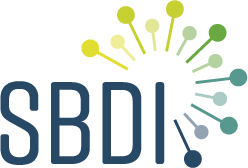The Living Atlases (LA) platform is an open source system that is primarily intended for finding, visualizing and analyzing biodiversity data. Many LA instances are currently in production around the world. System development is coordinated through the Living Atlases Community and is tightly connected to, and interoperable with, GBIF development (e.g. the IPT). The Swedish LA instance, the SBDI Bioatlas, is the main analysis and visualization platform provided by SBDI, and it is run using a shared cloud infrastructure service.
The LA platform consists of a number of interconnected modules, each with specific functions that communicate to provide a combined service-oriented platform for aggregation, visualization and analysis of biodiversity data. The Swedish instance of the system, the Bioatlas, implements a rich selection of the core LA modules. Some of these modules provide data publication functionality that extends or complements other SBDI services.
The Collectory module (in the Bioatlas accessible at https://collections.biodiversitydata.se/) functions as a registry of datasets and data providers. It is used to manage metadata on institutions, collections, data resource licenses and other aspects of the biodiversity datasets available through the LA instance. The Collectory can also be used to publish datasets.
The Lists module provides functionalities to manage and publish user-generated checklists or authoritative species lists (e.g., List of Sensitive Species Nationally Protected In Sweden). The Sensitive Data Service applies rules for processing observation records on sensitive species identified in such an authoritative taxonomic list.
The Biocache CLI (command line interface) tool provides functionality for ingestion, processing and storing occurrences information. It communicates with the Collectory module for data resource metadata. Similarly it communicates with several LA services during the ingestion of data into the system, including the reference taxonomy used in the platform.
SBDI currently supports two publication services in the Bioatlas platform. The Collectory services are used to enter and update metadata about data institutions and collections, that is, metadata about the organizations hosting the data resources. These metadata are managed from authorized Bioatlas user accounts, and the process should be straightforward.
The Lists services are used to publish checklists that are useful in analyses of Bioatlas data but that are not intended for publication to GBIF. For instance, this could include lists of indicator species, lists of species occurring in particular habitats or niches, lists of species that are being monitored in a particular project, or lists of species with particular life-history traits.
For publishing metadata and datasets, including checklists, to GBIF, we recommend using IPT or SOS rather than the Bioatlas. IPT and SOS datasets that are published to GBIF are easily made available to the Bioatlas by simply specifying the source of the DwC-A file in the Collectory. The datasets and associated metadata are then automatically ingested into the Bioatlas at the pre-specified intervals.
The more extensive publication services provided by the LA platform offer some interesting features, which may be of interest to SBDI data providers. For instance, the LA platform offers a Sandbox module that allows users to find and correct potential issues in the dataset before publication. Publishing datasets through the Collectory also provides a mechanism for sharing sensitive data with authorized users through the Bioatlas, and filtering out the same data when the Bioatlas services are accessed by non-authorized users or when the data are published to GBIF (see guide on handling sensitive data). SBDI may or may not explore some of these additional data publication opportunities in the LA tool set in the future; contact the SBDI Support Center if you are interested in trying or commenting on these features.
